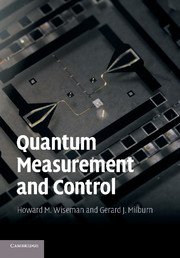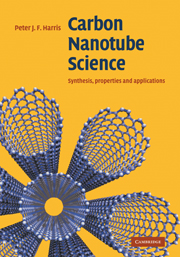Refine listing
Actions for selected content:
881 results in Ebooks in nanotechnology
13 - Polymer/layered double hydroxide flame retardant nanocomposites
- from Part II - Flame retardancy
-
-
- Book:
- Thermally Stable and Flame Retardant Polymer Nanocomposites
- Published online:
- 05 August 2011
- Print publication:
- 30 June 2011, pp 332-359
-
- Chapter
- Export citation
12 - Flame retardant polymer nanocomposites with alumina as filler
- from Part II - Flame retardancy
-
-
- Book:
- Thermally Stable and Flame Retardant Polymer Nanocomposites
- Published online:
- 05 August 2011
- Print publication:
- 30 June 2011, pp 314-331
-
- Chapter
- Export citation
14 - Flame retardant SBS–clay nanocomposites
- from Part II - Flame retardancy
-
-
- Book:
- Thermally Stable and Flame Retardant Polymer Nanocomposites
- Published online:
- 05 August 2011
- Print publication:
- 30 June 2011, pp 360-382
-
- Chapter
- Export citation
11 - Flame retardant polymer nanocomposites with fullerenes as filler
- from Part II - Flame retardancy
-
-
- Book:
- Thermally Stable and Flame Retardant Polymer Nanocomposites
- Published online:
- 05 August 2011
- Print publication:
- 30 June 2011, pp 276-313
-
- Chapter
- Export citation
10 - Self-extinguishing polymer–clay nanocomposites
- from Part II - Flame retardancy
-
-
- Book:
- Thermally Stable and Flame Retardant Polymer Nanocomposites
- Published online:
- 05 August 2011
- Print publication:
- 30 June 2011, pp 237-275
-
- Chapter
- Export citation

Quantum Measurement and Control
-
- Published online:
- 17 February 2011
- Print publication:
- 12 November 2009

Fundamentals of Guided-Wave Optoelectronic Devices
-
- Published online:
- 25 January 2011
- Print publication:
- 01 October 2009

Magnetic Memory
- Fundamentals and Technology
-
- Published online:
- 06 July 2010
- Print publication:
- 22 April 2010
2 - Wave–particle duality and its manifestation in radiation and particle behavior
-
- Book:
- Quantum Mechanics for Nanostructures
- Published online:
- 05 June 2012
- Print publication:
- 20 May 2010, pp 19-64
-
- Chapter
- Export citation
Appendix A - Classical dynamics of particles and waves
-
- Book:
- Quantum Mechanics for Nanostructures
- Published online:
- 05 June 2012
- Print publication:
- 20 May 2010, pp 310-337
-
- Chapter
- Export citation
Appendix B - Electromagnetic fields and waves
-
- Book:
- Quantum Mechanics for Nanostructures
- Published online:
- 05 June 2012
- Print publication:
- 20 May 2010, pp 338-377
-
- Chapter
- Export citation
List of notation
-
- Book:
- Quantum Mechanics for Nanostructures
- Published online:
- 05 June 2012
- Print publication:
- 20 May 2010, pp xiii-xvi
-
- Chapter
- Export citation
Frontmatter
-
- Book:
- Quantum Mechanics for Nanostructures
- Published online:
- 05 June 2012
- Print publication:
- 20 May 2010, pp i-iv
-
- Chapter
- Export citation
Appendix D - Tables of units
-
- Book:
- Quantum Mechanics for Nanostructures
- Published online:
- 05 June 2012
- Print publication:
- 20 May 2010, pp 423-426
-
- Chapter
- Export citation
5 - Approximate methods of finding quantum states
-
- Book:
- Quantum Mechanics for Nanostructures
- Published online:
- 05 June 2012
- Print publication:
- 20 May 2010, pp 136-154
-
- Chapter
- Export citation
Appendix C - Crystals as atomic lattices
-
- Book:
- Quantum Mechanics for Nanostructures
- Published online:
- 05 June 2012
- Print publication:
- 20 May 2010, pp 378-422
-
- Chapter
- Export citation
Contents
-
- Book:
- Quantum Mechanics for Nanostructures
- Published online:
- 05 June 2012
- Print publication:
- 20 May 2010, pp v-viii
-
- Chapter
- Export citation
4 - Additional examples of quantized motion
-
- Book:
- Quantum Mechanics for Nanostructures
- Published online:
- 05 June 2012
- Print publication:
- 20 May 2010, pp 105-135
-
- Chapter
- Export citation

Carbon Nanotube Science
- Synthesis, Properties and Applications
-
- Published online:
- 20 May 2010
- Print publication:
- 19 March 2009
7 - Quantization in nanostructures
-
- Book:
- Quantum Mechanics for Nanostructures
- Published online:
- 05 June 2012
- Print publication:
- 20 May 2010, pp 193-257
-
- Chapter
- Export citation
